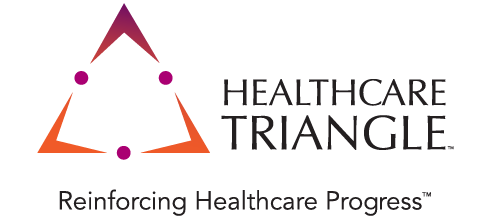Breaking Down Barriers to Cloud Adoption in Healthcare
By Sudish Mogli - Technology Advisor
Dec 10, 2021
More than 60% of healthcare IT leaders say a key part of their organization’s digital transformation consists of transitioning their business operations to the cloud, according to a recent survey by Healthcare Triangle (HCTI).
It’s easy to understand why. The healthcare cloud computing market is expected to reach $64.7 billion by 2025, owing largely to the cloud’s virtually unlimited capacity to help organizations fully leverage artificial intelligence, machine learning, robotic process automation, and other resource-intensive technologies.
Nevertheless, nearly one-in-five survey respondents report that their organization is still not prepared to make the move to the cloud.
What’s Holding Healthcare Organizations Back?
Among organizations that haven’t yet transitioned to the cloud, healthcare IT leaders say lack of IT resources (one-in-four respondents) and financial resources (23%) are the top two factors that keep them from investing in the cloud, followed by insufficient understanding of the benefits of the cloud for their operations (nearly 15%). Moreover, a similar survey by EY found that 65% of healthcare executives attribute their digital transformation failures to a lack of IT skills and talent. This is unfortunate, as achieving digital transformation in healthcare requires not just a significant investment in digital capabilities—including the cloud—but also on a robust foundation of IT personnel.
In our experience, the key to overcoming these limitations is to adopt a managed services approach to the cloud. With specialized support from a managed cloud services team, healthcare organizations can more successfully navigate the challenges associated with cloud adoption. It’s an approach that reduces the costs associated with cloud adoption and ensures organizations have the right expertise to optimize their use of the cloud.
Second, organizations should view their cloud investment as an entity unto itself, not just as an extension of their on-premises data center. The infrastructure in a data center is physical; that of the cloud is entirely virtual. This means the cloud must be treated as software or code and managed differently than server-based data warehouses.
By recognizing these foundational differences and supporting cloud investments with the requisite understanding and skillsets—distinctive features of a “cloud center of excellence,” if you will—healthcare organizations will be better positioned to achieve the value they seek.
Making the Right Moves
Attaining the promise of digital transformation and maximizing the power of the cloud requires not just a shift in technology, but also a shift in mindset.
Working with a seasoned and well-experienced partner can help your organization develop and implement a strategic approach to cloud investment and deployment. Healthcare Triangle can help you explore your options. Contact us.
Sudish Mogli is Chief Technology Officer, Healthcare Triangle.
Drop an email to info@healthcaretriangle.com or schedule a consultation.


